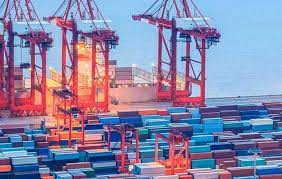- India intends to modernise the ASEAN India Trade in Goods Agreement (AITGA) in February 2023 in order to lower its huge trade deficit with ASEAN nations, with the goal of completing the revamp by 2025.
About ASEAN-India Trade in Goods Agreement (AITGA)
| Details | |
| Signing Date | August 13, 2009, w.e.f. January 1, 2010. |
| Objectives | Eliminate tariffs and liberalize trade in goods.Facilitate economic integration between ASEAN and India. |
| Key Features | Gradual reduction and eventual elimination of tariffsMeasures to facilitate trade and customs efficiency |
| Member Countries | ASEAN Members: Brunei, Cambodia, Indonesia, Laos, Malaysia, Myanmar, Philippines, Singapore, Thailand, Vietnam and India. |
| Economic Impact | Growth in trade between India and ASEAN countries – Diversification of trade basket. |
| Recent Developments | Discussions on reviewing and upgrading the agreement. |
| Challenges | Concerns over trade imbalances.Potential impact on certain domestic industries in India. |
| Strategic Significance | Part of India’s “Act East” policy.Step towards broader regional economic integration. |
Review
- ASEAN countries accounted for 11.3% of India’s worldwide commerce in 2022-23, including Indonesia, Malaysia, the Philippines, Singapore, Thailand, Brunei, Vietnam, Laos, Myanmar, and Cambodia.
- Current Trade Imbalance: The current trade imbalance with ASEAN is $43.57 billion, up from $7.5 billion per year when the treaty was first adopted.
- In 2022-23, India’s exports to ASEAN were worth $44 billion, while imports were worth $87.57 billion.
- Trade Rebalancing: The major purpose is to offset the disproportionate advantages that have favoured ASEAN since the agreement’s introduction in 2010.
- Modernization of the Agreement: The emphasis is on modernising the FTA to reflect current global trade dynamics and to add new aspects such as product-specific norms and trade remedies.
Key Areas of Negotiation
- Rules of Origin (ROO): Changes to ROO are proposed to promote market access for Indian products and prevent imports, notably from China, from being rerouted through ASEAN countries.
- Trade Remedies: A new chapter on trade remedies will seek to safeguard domestic industry against unfair trade practices and import surges.
- Exclusion of New Areas: To avoid complicating the accord, the agreement will not be expanded to encompass additional areas such as labour, environment, MSMEs, or gender.
Issues and Industry Perspectives
- Concessions Required: While India strives to manage its trade deficit, concessions may be required to secure reciprocal gains.
- Chemicals, plastics, minerals, leather, textiles, and gems and jewellery are among the industries indicated for potential export growth.
Source: https://economictimes.indiatimes.com/news/economy/foreign-trade/india-asean-decision-on-review-of-free-trade-agreement-in-goods-expected-tomorrow/articleshow/102878074.cms

